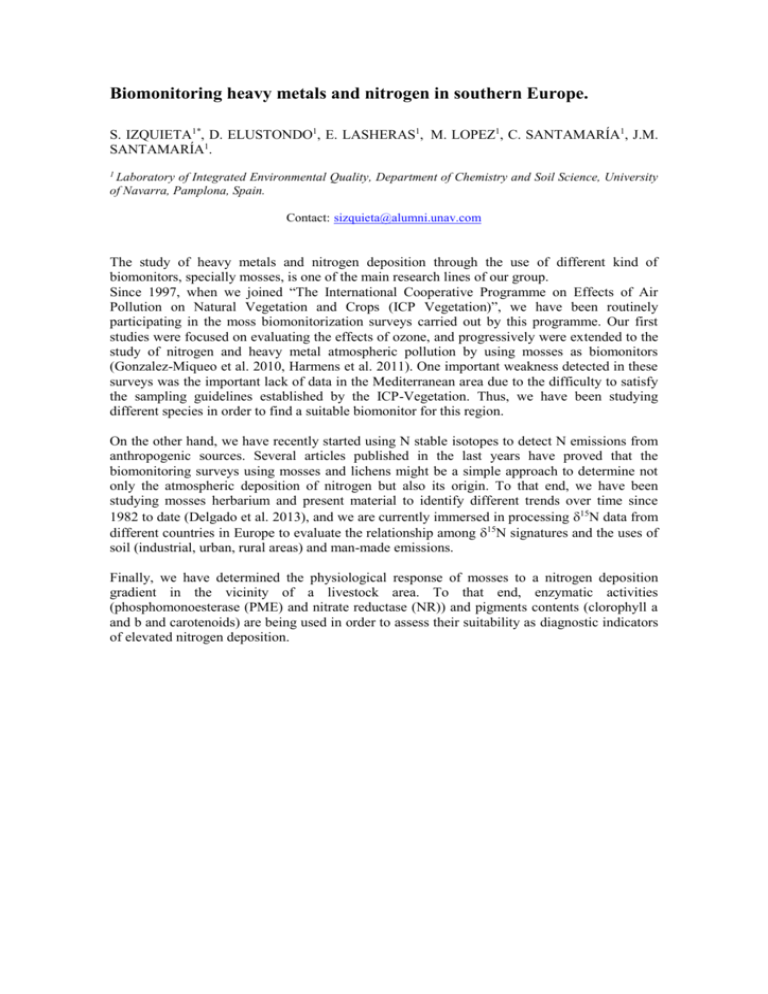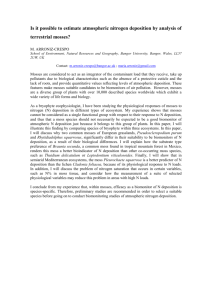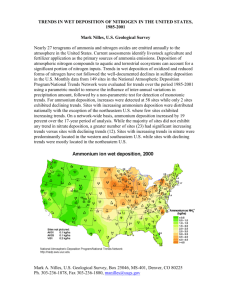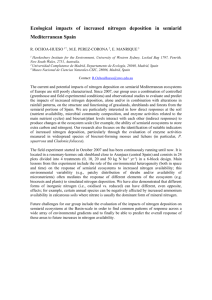Biomonitoring heavy metals and nitrogen in southern Europe
advertisement

Biomonitoring heavy metals and nitrogen in southern Europe. S. IZQUIETA1*, D. ELUSTONDO1, E. LASHERAS1, M. LOPEZ1, C. SANTAMARÍA1, J.M. SANTAMARÍA1. 1 Laboratory of Integrated Environmental Quality, Department of Chemistry and Soil Science, University of Navarra, Pamplona, Spain. Contact: sizquieta@alumni.unav.com The study of heavy metals and nitrogen deposition through the use of different kind of biomonitors, specially mosses, is one of the main research lines of our group. Since 1997, when we joined “The International Cooperative Programme on Effects of Air Pollution on Natural Vegetation and Crops (ICP Vegetation)”, we have been routinely participating in the moss biomonitorization surveys carried out by this programme. Our first studies were focused on evaluating the effects of ozone, and progressively were extended to the study of nitrogen and heavy metal atmospheric pollution by using mosses as biomonitors (Gonzalez-Miqueo et al. 2010, Harmens et al. 2011). One important weakness detected in these surveys was the important lack of data in the Mediterranean area due to the difficulty to satisfy the sampling guidelines established by the ICP-Vegetation. Thus, we have been studying different species in order to find a suitable biomonitor for this region. On the other hand, we have recently started using N stable isotopes to detect N emissions from anthropogenic sources. Several articles published in the last years have proved that the biomonitoring surveys using mosses and lichens might be a simple approach to determine not only the atmospheric deposition of nitrogen but also its origin. To that end, we have been studying mosses herbarium and present material to identify different trends over time since 1982 to date (Delgado et al. 2013), and we are currently immersed in processing 15N data from different countries in Europe to evaluate the relationship among 15N signatures and the uses of soil (industrial, urban, rural areas) and man-made emissions. Finally, we have determined the physiological response of mosses to a nitrogen deposition gradient in the vicinity of a livestock area. To that end, enzymatic activities (phosphomonoesterase (PME) and nitrate reductase (NR)) and pigments contents (clorophyll a and b and carotenoids) are being used in order to assess their suitability as diagnostic indicators of elevated nitrogen deposition.











